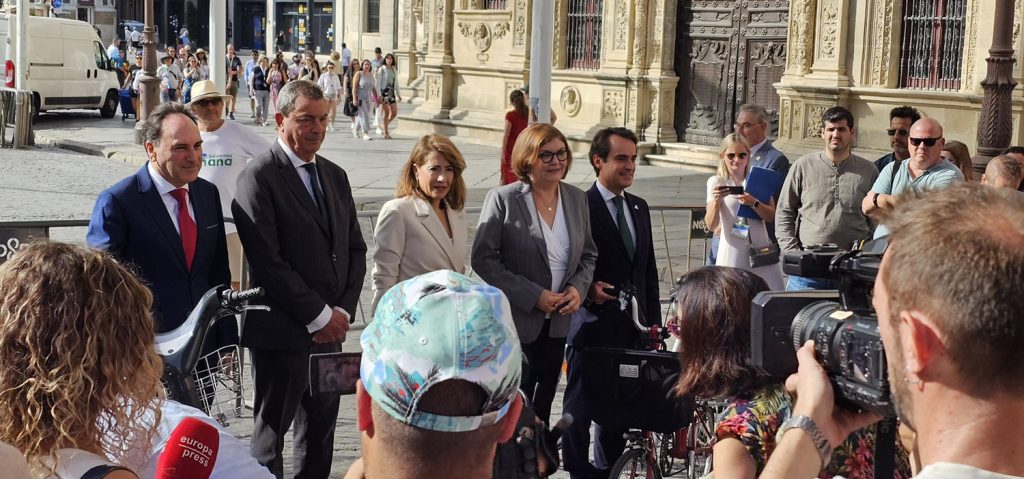The new European Cycling Declaration marks a shift from cycling being tackled at the national level to the EU level.
Unveiled at Urban Mobility Days hosted by the European Commission in Seville, the ambitious declaration includes new rules, guidance and funding instruments to boost cycling and guide future action across the EU.
Bernadette Bergsma, Director of Communication and EU Affairs at EIT Urban Mobility, told Zag Daily: “The declaration, championed by key players like the European Cyclists’ Federation and Cycling Industries Europe, signifies a notable shift from cycling policies being primarily the responsibility of individual EU countries to a more coordinated effort at the EU level.”
EU policymakers are seizing the current political momentum on cycling to solidify it as a priority in the next European Mobility Agenda 2024-2029. Plans for the declaration were first announced in March.
Kristian Brink, CEO of Urban Sharing and Chair of the Bike Share Expert Group of Cycling Industries Europe, explained why after years of advocacy groups fighting for a coordinated top-down initiative, the time is finally ripe.
“The political will and sheer number of cyclists have made it possible to actually get proper recognition at the EU commission level. Europe is not the same as it was 15 years ago. Now cycling has taken off. Micromobility is better known now. It’s become a real alternative.
“We also have an ally in European Commission Executive Vice-President Frans Timmermans. As a cyclist himself, he’s always been a local champion for cycling and is now bringing it to the Commission’s attention.”
The declaration recognises the European cycling industry as a global leader and an important growing sector, representing more than 1,000 small and medium-sized enterprises which account for more than a million jobs, with potential to create many more.
André Sobczak, Secretary General of Eurocities, told Zag: “In many cities, the Covid-19 pandemic visibly increased cycling’s popularity. Every day, we see more and more cyclists swapping their cars for their bikes, so it is paramount to keep this momentum.
“At the same time, as climate change turns into a pressing emergency, cycling will help to reach our climate goals and reduce pollution. Electric vehicles alone won’t be able to clear the air. To promote a real, effective sustainable mobility shift we need to add cycling to the equation.”
Pauline Aymonier, Co-Chair of Micro-Mobility for Europe, said: “With more than 350 million trips in 2022, the central role that micromobility plays in European mobility systems should be reflected. Cyclists and micromobility users share the same infrastructure and increasing investment in this space will enhance the safety of both user groups.”

In the declaration, the European Commission commits to working towards the elimination of road deaths by 2050 known as Vision Zero, a reality. The interim target is set at a 50% reduction in fatalities and serious injuries by 2030.
To get there, safe infrastructure is listed as a prerequisite of cycling. To encourage hesitant groups to take up cycling, including women, children and older people, safe and coherent cycling networks in cities, better links with public transport, and secure parking spaces are necessary. It calls for dedicated funding for safe infrastructure at local, national and European levels.
BYCS Co-Founder and CEO Maud de Vries told Zag: “We at BYCS feel optimistic about the launch of the new European Cycling Declaration today, and are hoping to see support for strengthening in cycling cultural, human, and social policies, particularly aimed at underserved demographics such as young children and their caregivers.”










